Abstract
Histopathological changes in the placentas, embryos, and fetuses of rats inoculated intraperitoneally with the virulent Guajira strain of Venezuelan equine encephalitis virus were studied by light microscopy and immunoperoxidase methods. Rats inoculated before day 15 of pregnancy showed necrosis and hemorrhages in the embryonic disks. Swelling of cytoplasm and nuclear pyknosis of cyto- and syncytotrophoblastic cells were noted as early as 2 days after inoculation. During weeks 1 and 2 of pregnancy, death of the embryos was always observed 3 to 4 days after Venezuelan equine encephalitis virus inoculation. Placental and fetal damage varied among the specimens. In rats 18 days pregnant and sacrificed 2 days after inoculation, there were some viable fetuses; the placentas showed inflammatory reactions in the mesometrial and decidual vessels. Other rats sacrificed at 3 to 4 days after inoculation showed large placental infarcts with fetal death. Viremia peaked during day 2 after inoculation. Immunoperoxidase stains demonstrated viral antigens present in the decidua, myometrium, and cyto- and syncytotrophoblastic cells. These experiments provide additional data regarding the pathogenesis and structural damage in the placental and fetal tissues caused by Venezuelan equine encephalitis virus.
Full text
PDF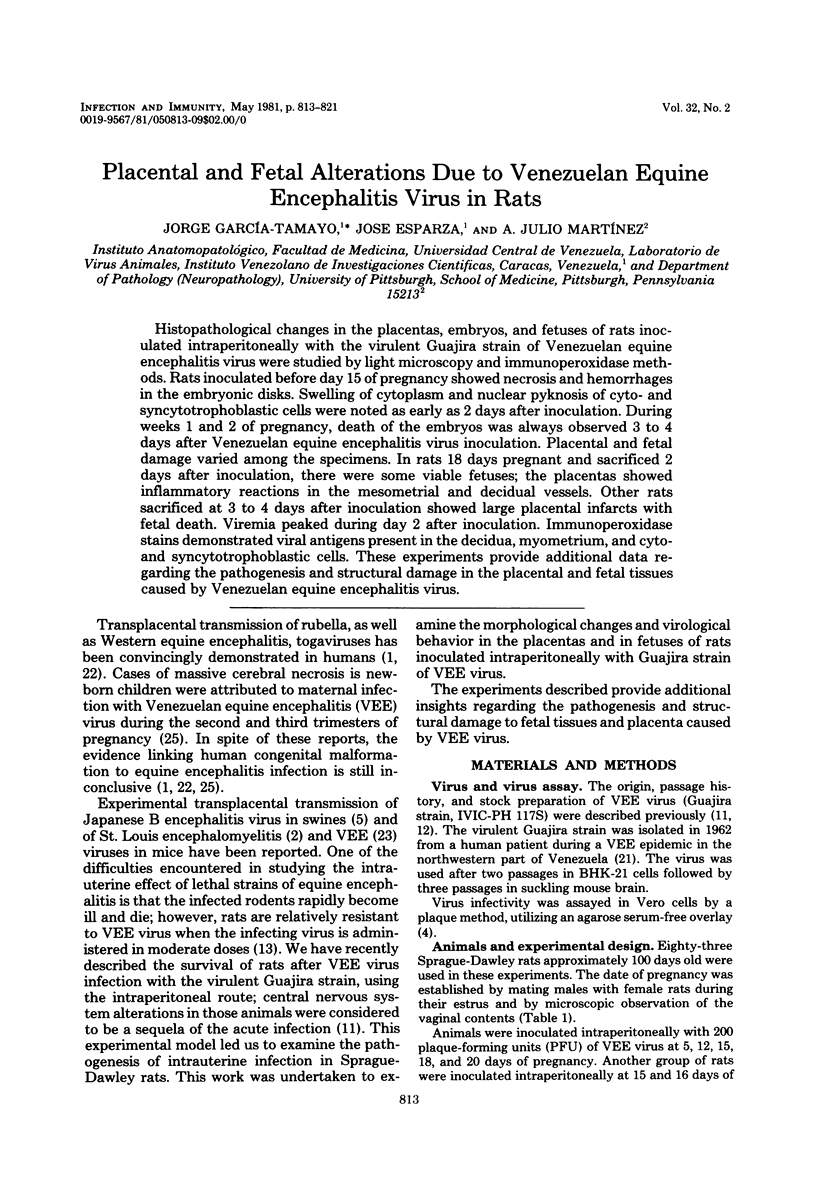
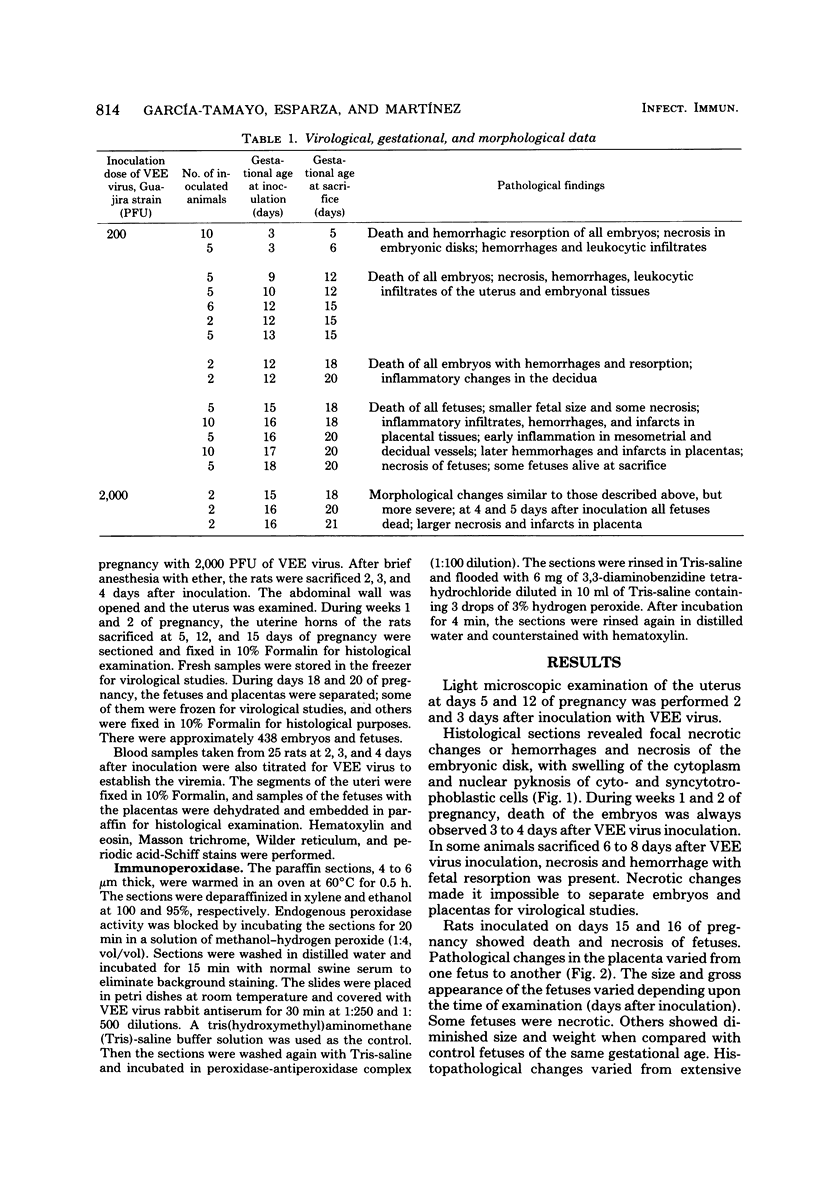
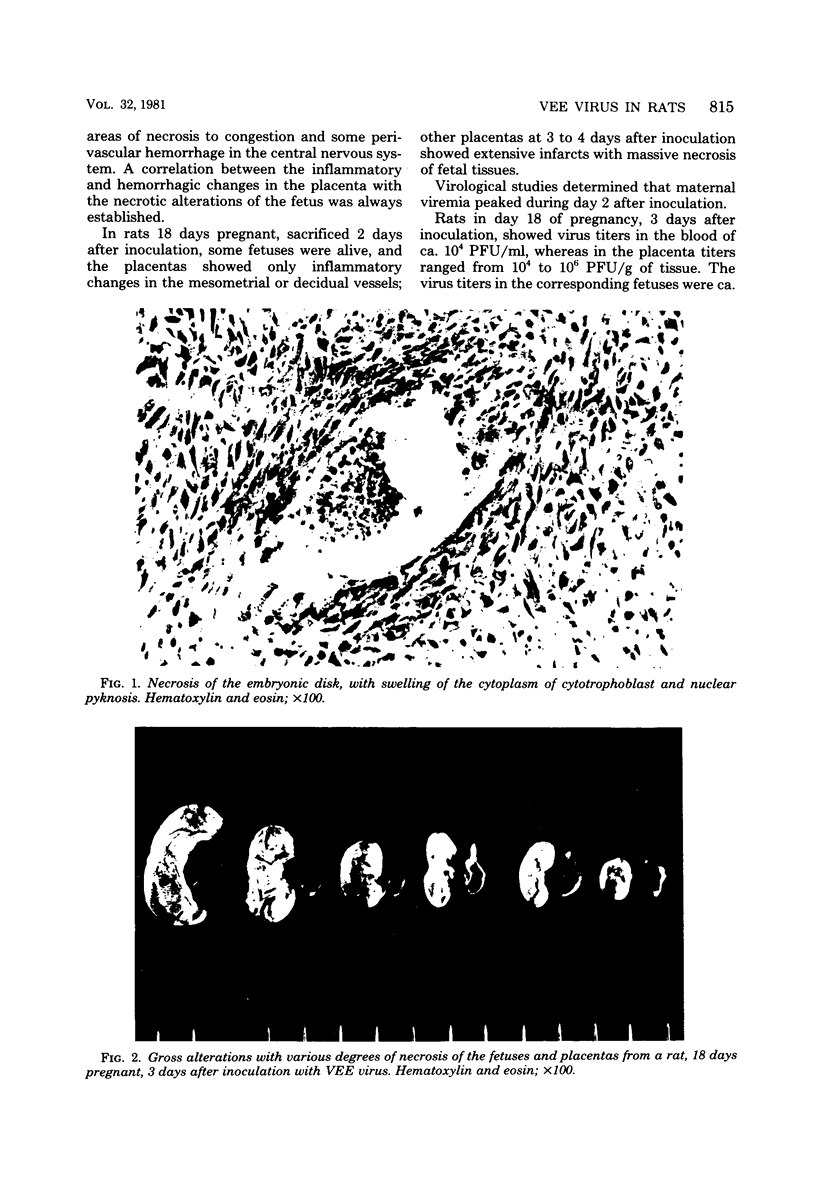
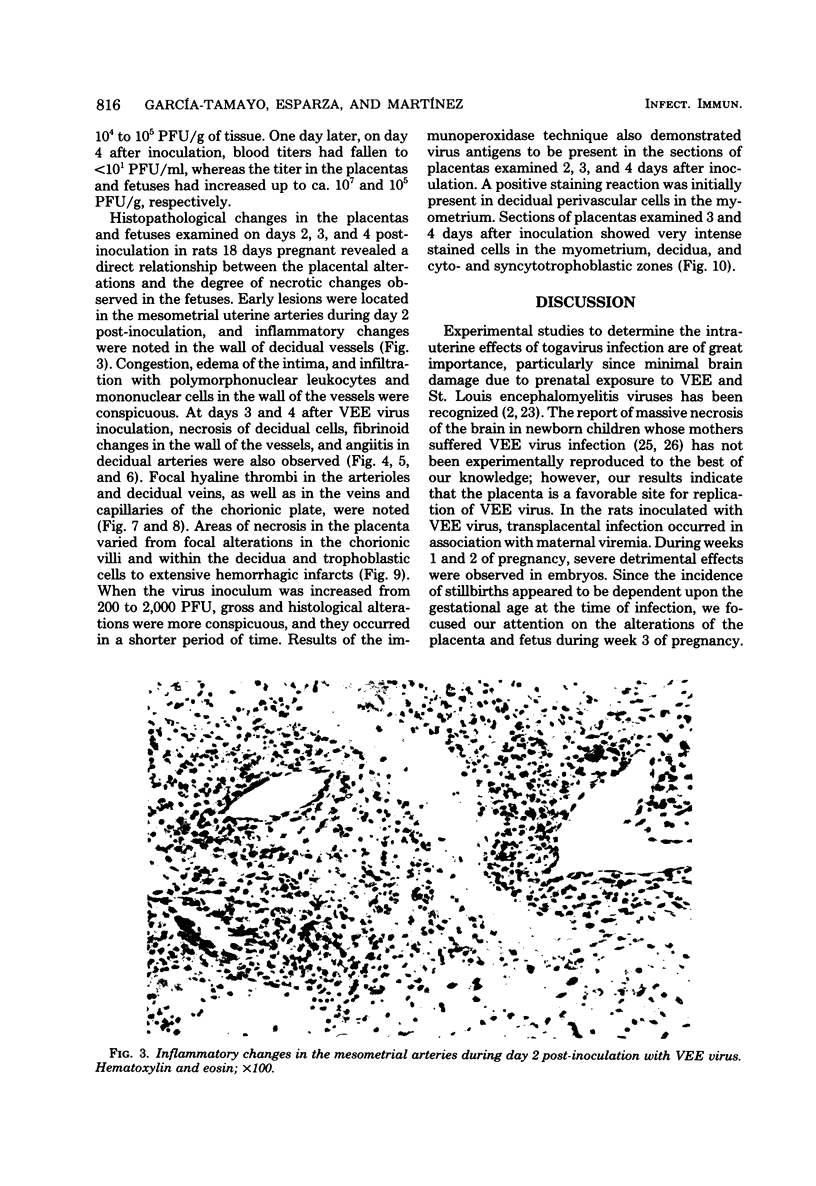
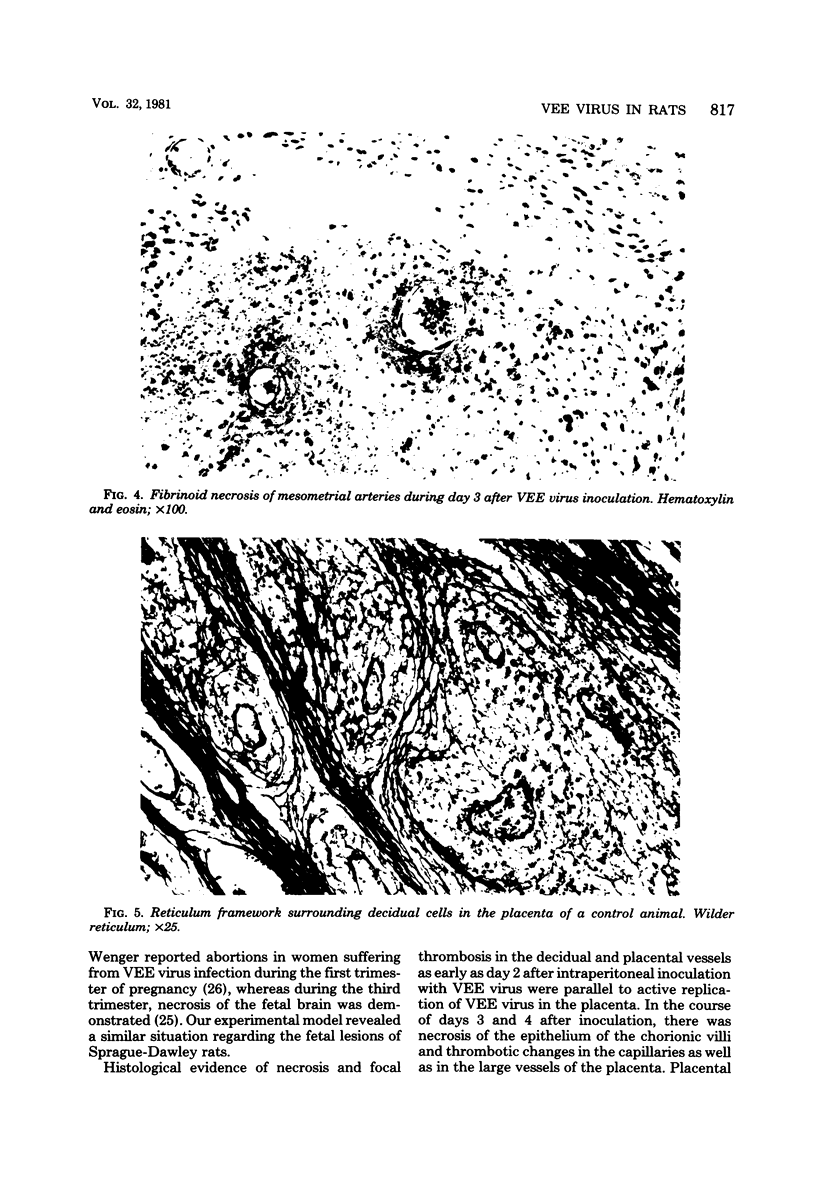
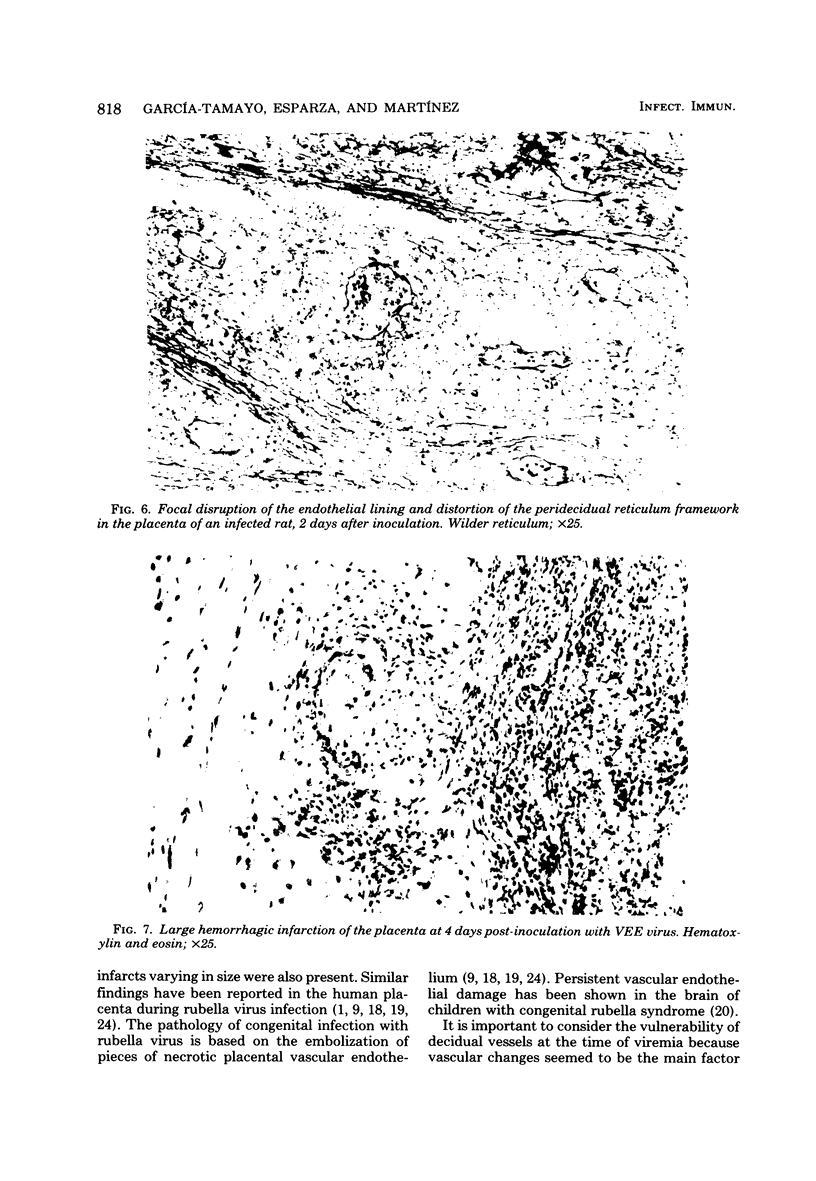
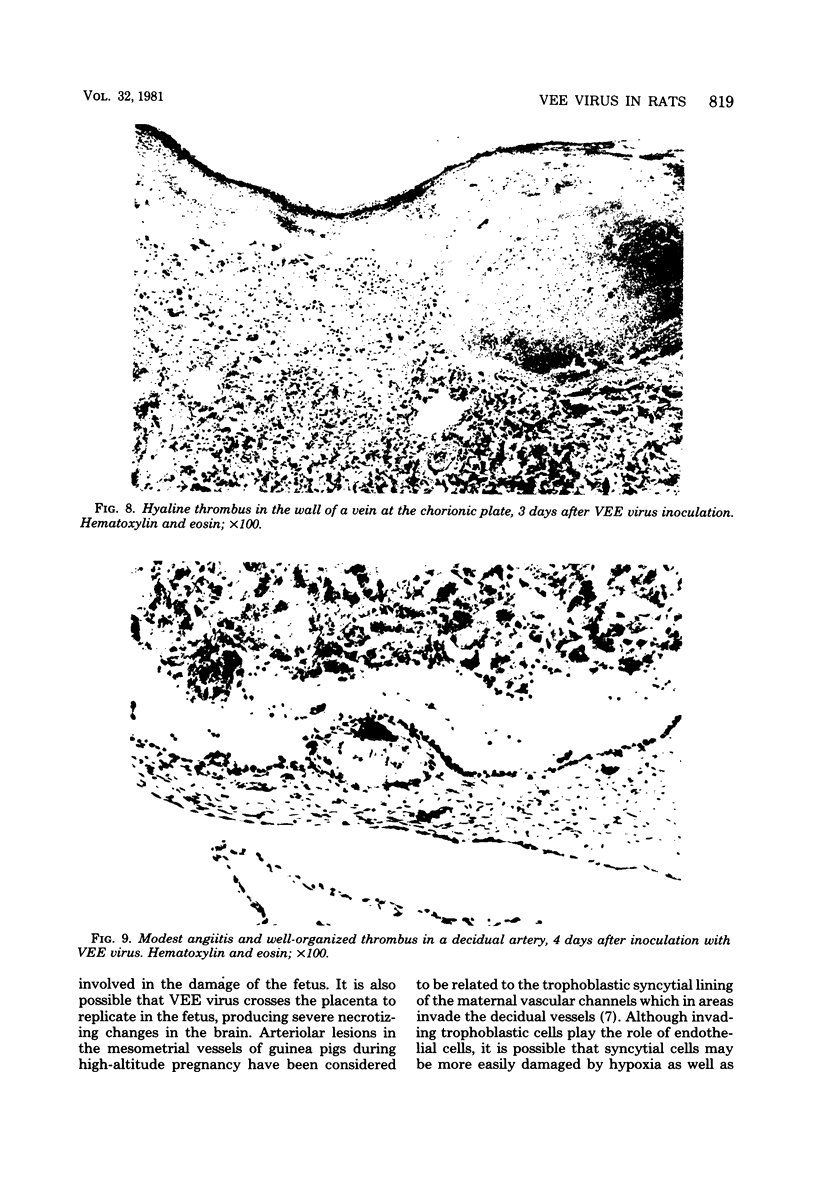
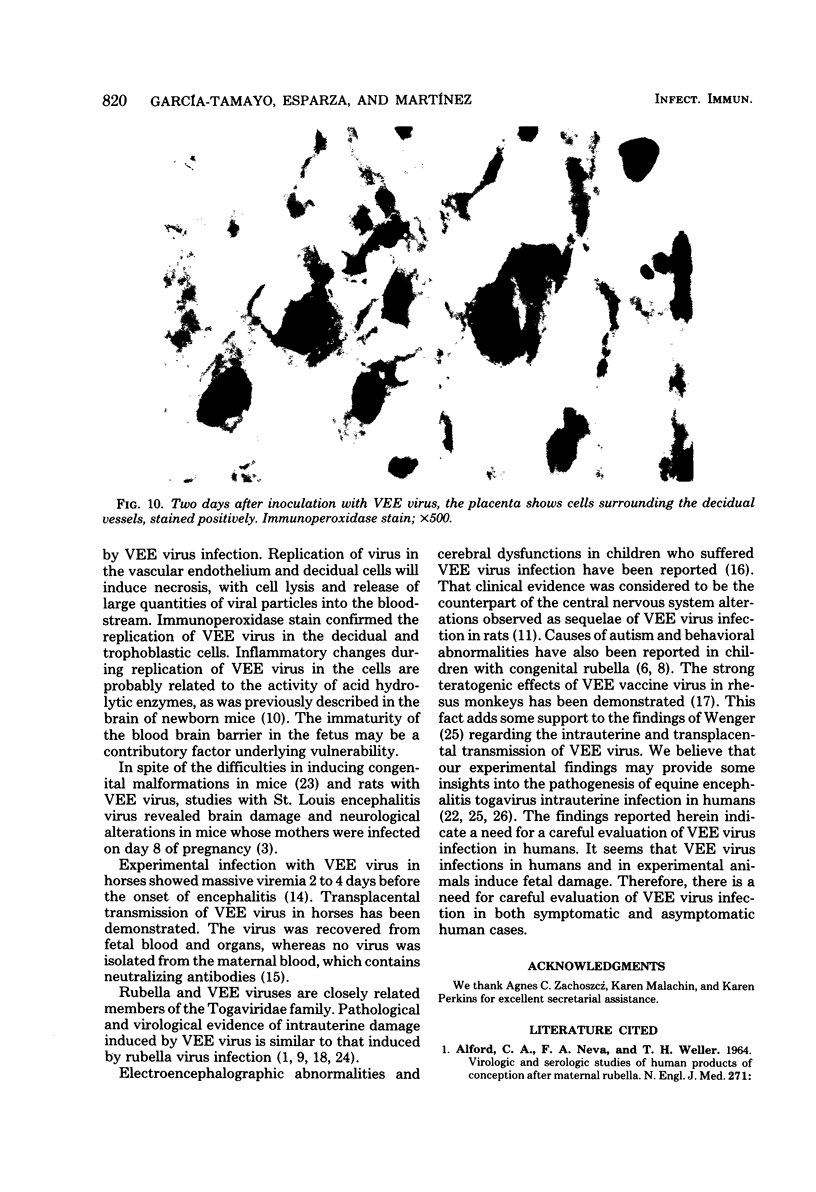
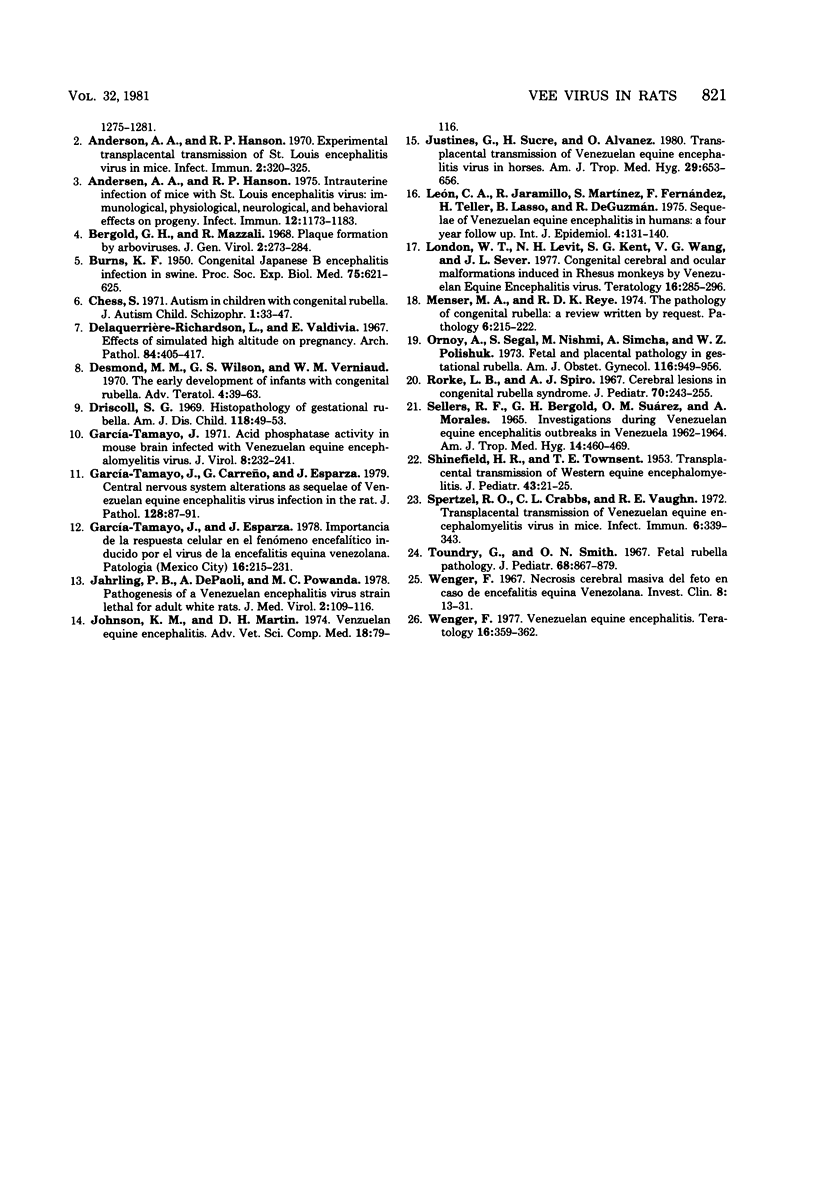
Images in this article
Selected References
These references are in PubMed. This may not be the complete list of references from this article.
- Andersen A. A., Hanson R. P. Experimental transplacental transmission of st. Louis encephalitis virus in mice. Infect Immun. 1970 Sep;2(3):320–325. doi: 10.1128/iai.2.3.320-325.1970. [DOI] [PMC free article] [PubMed] [Google Scholar]
- Andersen A. A., Hanson R. P. Intrauterine infection of mice with St. Louis encephalitis virus: immunological, physiological, neurological, and behavioral effects on progeny. Infect Immun. 1975 Nov;12(5):1173–1183. doi: 10.1128/iai.12.5.1173-1183.1975. [DOI] [PMC free article] [PubMed] [Google Scholar]
- BURNS K. F. Congenital Japanese B encephalitis infection of swine. Proc Soc Exp Biol Med. 1950 Nov;75(2):621–625. doi: 10.3181/00379727-75-18285. [DOI] [PubMed] [Google Scholar]
- Bergold G. H., Mazzali R. Plaque formation by arboviruses. J Gen Virol. 1968 Mar;2(2):273–284. doi: 10.1099/0022-1317-2-2-273. [DOI] [PubMed] [Google Scholar]
- Delaquerrière-Richardson, Valdivia E. Effects of simulated high altitude on pregnancy. Placental morphology in albino guinea pigs. Arch Pathol. 1967 Oct;84(4):405–417. [PubMed] [Google Scholar]
- Driscoll S. G. Histopathology of gestational rubella. Am J Dis Child. 1969 Jul;118(1):49–53. doi: 10.1001/archpedi.1969.02100040051009. [DOI] [PubMed] [Google Scholar]
- Garcia-Tamayo J. Acid phosphatase activity in mouse brain infected with Venezuelan equine encephalomyelitis virus. J Virol. 1971 Aug;8(2):232–241. doi: 10.1128/jvi.8.2.232-241.1971. [DOI] [PMC free article] [PubMed] [Google Scholar]
- García-Tamayo J., Carreño G., Esparza J. Central nervous system alterations as sequelae of Venezuelan equine encephalitis virus infection in the rat. J Pathol. 1979 Jun;128(2):87–91. doi: 10.1002/path.1711280206. [DOI] [PubMed] [Google Scholar]
- Jahrling P. B., DePaoli A., Powanda M. C. Pathogenesis of a Venezuelan encephalitis virus strain lethal for adult white rats. J Med Virol. 1978;2(2):109–116. doi: 10.1002/jmv.1890020205. [DOI] [PubMed] [Google Scholar]
- Johnson K. M., Martin D. H. Venezuelan equine encephalitis. Adv Vet Sci Comp Med. 1974;18(0):79–116. [PubMed] [Google Scholar]
- Justines G., Sucre H., Alvarez O. Transplacental transmission of Venezuelan equine encephalitis virus in horses. Am J Trop Med Hyg. 1980 Jul;29(4):653–656. doi: 10.4269/ajtmh.1980.29.653. [DOI] [PubMed] [Google Scholar]
- León C. A. Sequelae of Venezuelan equine encephalitis in humans: a four year follow-up. Int J Epidemiol. 1975 Jun;4(2):131–140. doi: 10.1093/ije/4.2.131. [DOI] [PubMed] [Google Scholar]
- London W. T., Levitt N. H., Kent S. G., Wong V. G., Sever J. L. Congenital cerebral and ocular malformations induced in rhesus monkeys by Venezuelan equine encephalitis virus. Teratology. 1977 Dec;16(3):285–285. doi: 10.1002/tera.1420160307. [DOI] [PubMed] [Google Scholar]
- Menser M. A., Reye R. D. The pathology of congenital rubella: a review written by request. Pathology. 1974 Jul;6(3):215–222. doi: 10.3109/00313027409068988. [DOI] [PubMed] [Google Scholar]
- Ornoy A., Segal S., Nishmi M., Simcha A., Polishuk W. Z. Fetal and placental pathology in gestational rubella. Am J Obstet Gynecol. 1973 Aug 1;116(7):949–956. doi: 10.1016/s0002-9378(16)33842-x. [DOI] [PubMed] [Google Scholar]
- Rorke L. B., Spiro A. J. Cerebral lesions in congenital rubella syndrome. J Pediatr. 1967 Feb;70(2):243–255. doi: 10.1016/s0022-3476(67)80419-0. [DOI] [PubMed] [Google Scholar]
- SELLERS R. F., BERGOLD G. H., SUAREZ O. M., MORALES A. INVESTIGATIONS DURING VENEZUELAN EQUINE ENCEPHALITIS OUTBREAKS IN VENEZUELA--1962-1964. Am J Trop Med Hyg. 1965 May;14:460–469. doi: 10.4269/ajtmh.1965.14.460. [DOI] [PubMed] [Google Scholar]
- SHINEFIELD H. R., TOWNSEND T. E. Transplacental transmission of western equine encephalomyelitis. J Pediatr. 1953 Jul;43(1):21–25. doi: 10.1016/s0022-3476(53)80082-x. [DOI] [PubMed] [Google Scholar]
- Spertzel R. O., Crabbs C. L., Vaughn R. E. Transplacental transmission of Venezuelan equine encephalomyelitis virus in mice. Infect Immun. 1972 Sep;6(3):339–343. doi: 10.1128/iai.6.3.339-343.1972. [DOI] [PMC free article] [PubMed] [Google Scholar]
- Wenger F. Venezuelan equine encephalitis. Teratology. 1977 Dec;16(3):359–362. doi: 10.1002/tera.1420160317. [DOI] [PubMed] [Google Scholar]












